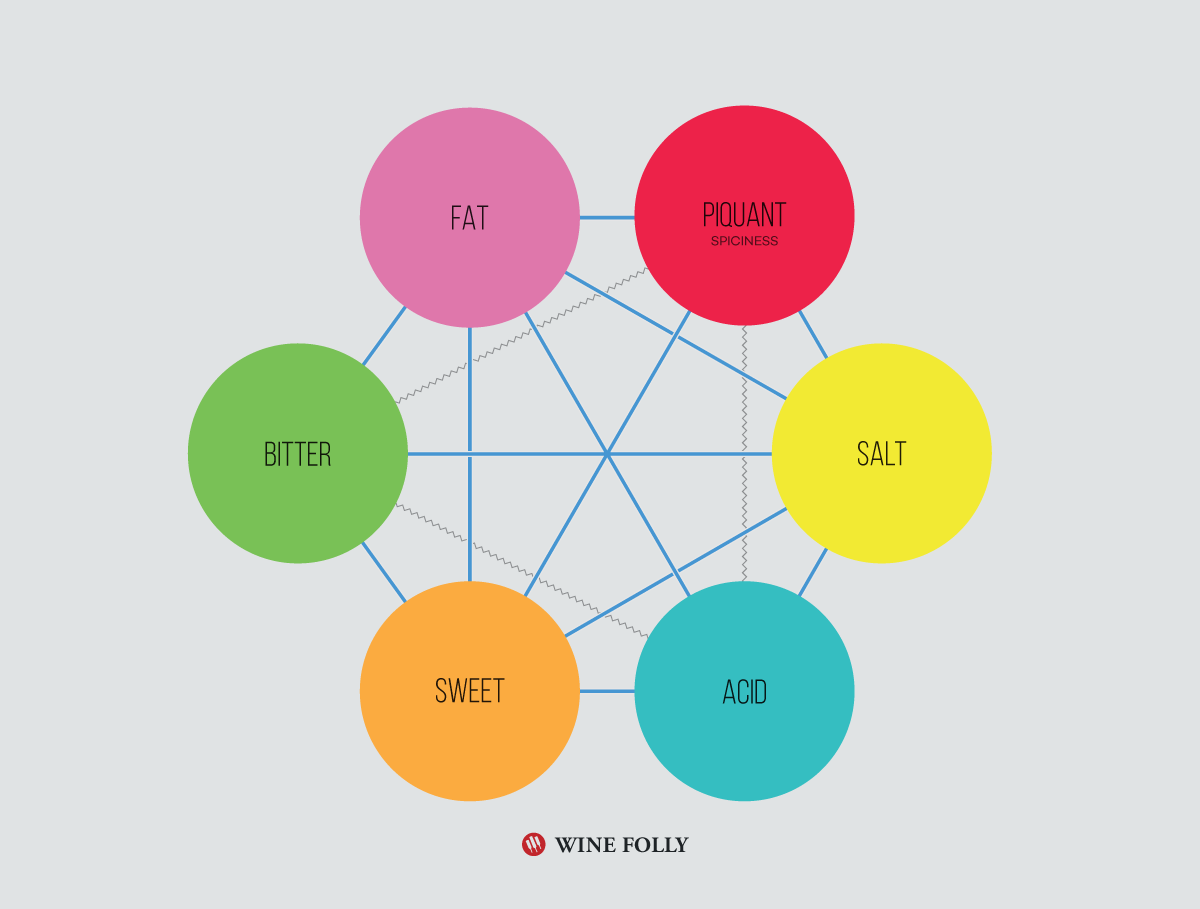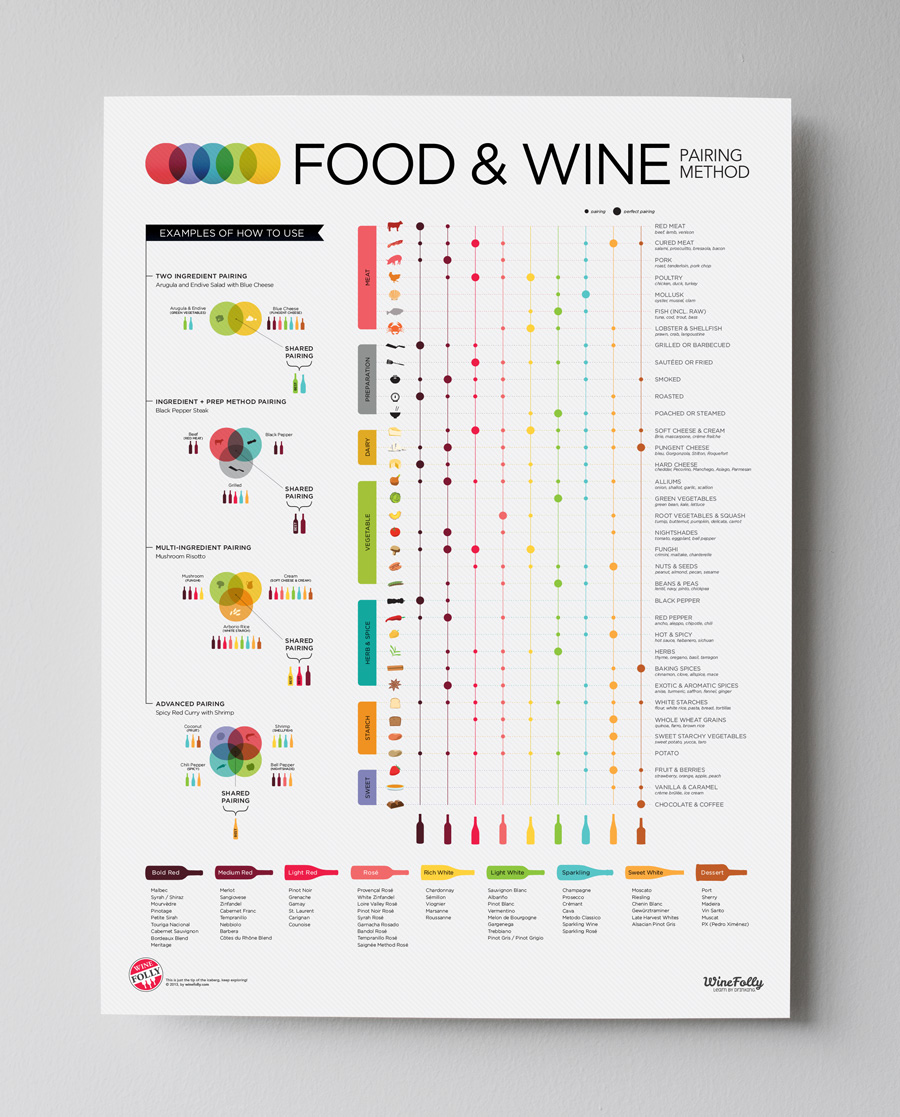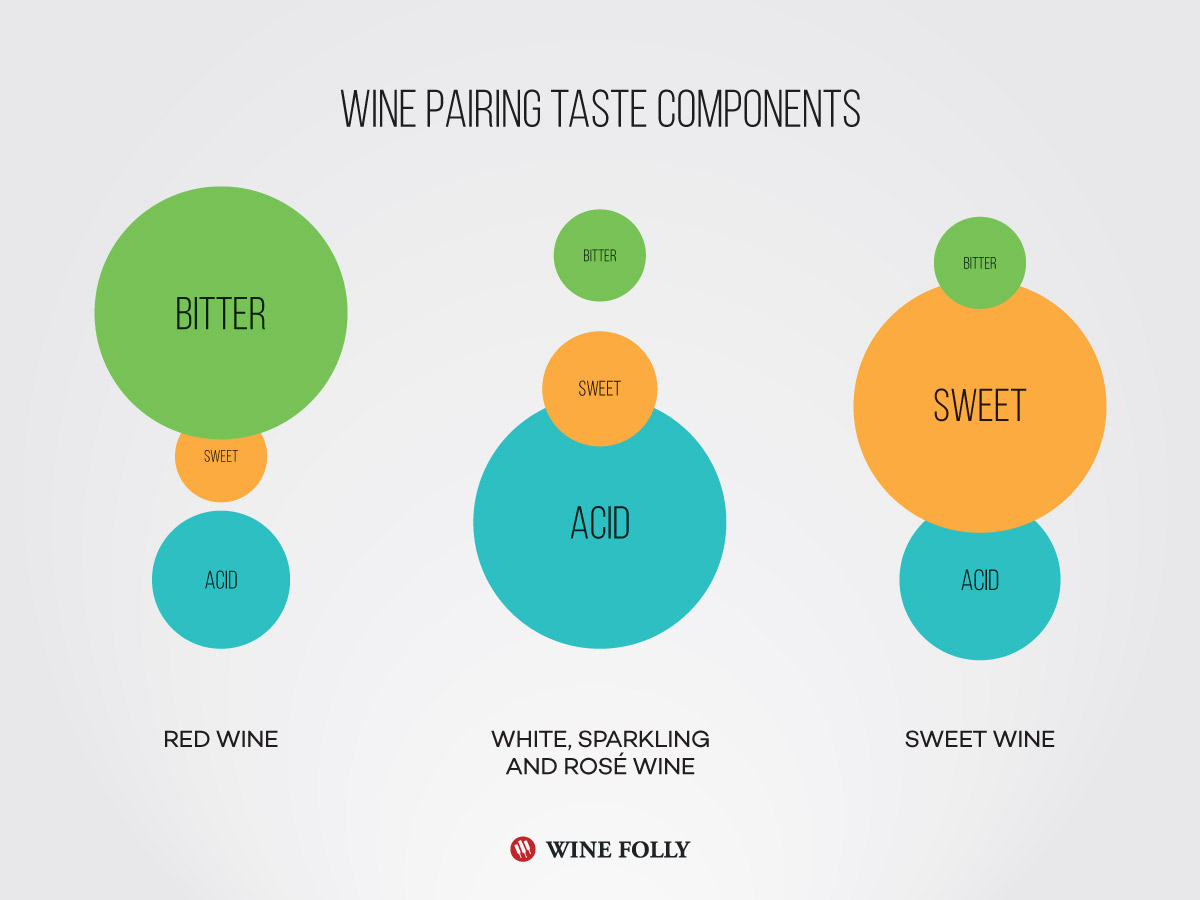Learn the basics of food and wine pairing to create your own. This guide will show you the steps to pairing. You’ll also learn what to look for in a recipe to make great wine matches.
A great food and wine pairing balances the components of a dish and the characteristics of a wine.
As much as pairing food and wine is complex, the basics are simple to grasp.
9 Tips For Pairing Wine & Food
These beginner-friendly tips will help you create consistently great pairings. As you get more familiar with different wines, you’ll become confident and can experiment with breaking the rules! (Gamay with trout anyone?)
- Choose a wine that’s more acidic than the food.
- The wine should be sweeter than the food.
- The wine should have the same flavor intensity as the food.
- Pair red wines with bold-flavored meats (e.g. red meat).
- White wines pair best with light-intensity meats (e.g. fish or chicken).
- Bitter wines (e.g. red wines) are best balanced with fat.
- It is better to match the wine with the sauce than the meat.
- More often than not, white, sparkling, and rosé wines create complementary pairings.
- More often than not, red wines create congruent pairings.

Congruent Pairings vs Complementary Pairings
A complementary pairing creates balance through complementary tastes and flavors.
A congruent pairing creates balance by amplifying shared flavor compounds.

The 6 Basic Tastes
We’ve learned that food has over 20 tastes, from the basic (including sweet, sour, and fat) to the extreme (think spicy, umami, calcium, and electric). When pairing food and wine, you’ll be considering just six tastes and how wine interacts with them. They are:
- salt
- acid
- sweet
- bitter
- fat
- spice (piquant)
Basic Taste Components in Wine
For the most part, wine lacks the three tastes of saltiness, fattiness, and spiciness, but it does contain acidity, sweetness, and bitterness to varying degrees. Generally speaking, you can group wines into three different categories:
- Red wines have more bitterness.
- White, rosé, and sparkling wines have more acidity.
- Sweet wines have more sweetness.
Basic Taste Components in Food
Simplify a dish down to its basic dominant tastes. For example, baked macaroni has two primary components: fat and salt. Southern barbecue is a bit more complex and includes fat, salt, sweet, and spice (plus a little acid!). Even dishes without meat can be simplified. For example, a green salad offers acidity and bitterness, while creamed corn offers fattiness and sweetness.
Consider the Intensity
Food: Is the food super light or super rich? A salad may seem lighter, but perhaps the dressing is balsamic vinaigrette with high acidity. If the intensity of the dish isn’t obvious at first, focus on the power of each taste component (acidity, fat, sweetness, etc).
Wine: Is the wine light or bold? Here are a few examples:
- Sauvignon Blanc is light-bodied, but it has higher acidity.
- Chardonnay has more body but is usually not too acidic.
- Pinot Noir is lighter bodied (for a red wine), and it doesn’t have too much tannin (bitterness).
- Cabernet Sauvignon is more full-bodied and has high tannin (more bitterness).
Need more examples? 8 Common Wines and Their Taste Profiles
Find Complementary or Congruent Pairings
Now that you’ve identified the basic taste components in your dish, you can start playing around with pairing options. The simple example of the baked macaroni will offer up several possible pairings:
Complementary Pairing Example: A white wine with high acidity will complement the fat in the macaroni. So, for example, a traditional mac and cheese recipe with a creamy béchamel sauce matched with zesty white wine such as Pinot Grigio, Assyrtiko, or Sauvignon Blanc would create a Complementary Pairing.
Congruent Pairing Example: A white wine with creaminess will add to the dish’s creaminess. So, for example, a traditional mac and cheese recipe with a creamy béchamel sauce matched with a creamy white wine such as Viognier or Chardonnay would create a Congruent Pairing.

Getting Creative
Once you balance the major taste components in the wine and dish, you can get creative by pairing the more subtle flavors. Here are some examples using variants of mac and cheese:
BOLD RED WINE: This pairing concept relies on balancing the bitterness (tannin) of the wine with the salt and fat in the macaroni. This balancing will leave you with the remaining subtle flavors to pair with the cheese and wine. So, for example, if your baked macaroni has smoked gouda in it, you might choose a Syrah which also has smokiness in it (on the finish). The smoky flavors combine to create a congruent pairing, while the tannin in the wine creates a complementary pairing with the fat in the dish.
SWEET WHITE WINE: The idea behind this pairing is to bring out the sweet and salty flavors with a pairing. For example, mac and cheese with ham would match well with a zesty white wine with some sweetness like Riesling. The acidity would create a complementary pairing with the fat, and the sweetness would act as a congruent pairing with the ham.
Need some more help?
Here are a few more guides to get you started:

